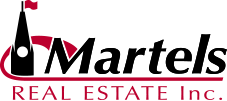Large Banks Raise Rates in Wake of Bank of Canada Hike
Tuesday, February 6, 2018
Banks Raise Rates in Wake of Bank of Canada Hike
Although it just became harder for most applicants to qualify for a mortgage in Canada. Under current housing rules, only borrowers with a downpayment of less than 20 percent require mortgage insurance. This category of borrowers are already subject to a mortgage “stress test” that was introduced back in July 2016, amidst concerns about rising household indebtedness.
Right now, if you’re applying for a mortgage with a downpayment of 20 percent or more, the lender will assess if your financial situation is robust enough to afford a five-year mortgage qualifying rate, which currently sits in the range of 4.64 to 4.89 percent.
Under the new rules, OSFI will require that lenders use that same five-year mortgage rate plus two percent — essentially you’ll need to have income that qualifies you to afford an interest rate on a home loan of roughly seven percent.
The stress test imposed on mortgage applicants requiring insurance – those with less than 20 per cent down payment – is now being imposed on all new applicants, effective January 1, 2018. Even applicants with more than a 20% down payment must qualify at the five-year benchmark rate published by the Bank of Canada or the lender’s contractual mortgage rate plus 2%, whichever is higher.
Third Increase in Seven Months From Banks Signals End of Easy Money Era
This second move by the Superintendent of Financial Institutions – Canada’s federal finance regulator – is intended to rein in record high levels of Canadian personal debt and cool the overheated housing market. “These revisions … reinforce a strong and prudent regulatory regime for residential mortgage underwriting in Canada,” said superintendent Jeremy Rudin in a statement.
At the same time, The Bank of Canada raised it trendsetting rate January 17, 2018 for the third time since the previous July. Referencing global economic growth, stronger consumption and residential investment than expected, strong employment growth, increasing business investment, and increasing inflation, the Bank of Canada raised its rate a quarter of a percentage point. By the end of the business day all five Canadian chartered banks correspondingly raised their prime rates to exactly 3.45%.
Bank of Canada governor Stephen Poloz told Business New Network later that day that record high household debt has made the Canadian economy more sensitive to interest rate changes than in the past. “We know in our hearts and in our models that the economy will be more sensitive to higher interest rates today than it was 10 years ago,” he told Amanda Lang in an interview. Sensitive, indeed. Nearly 60% of respondents in a CIBC survey conducted earlier this month said that they would feel “significantly less confident” if interest rates rise. And Canada’s central bank hinted at further rate hikes. “While the economic outlook is expected to warrant higher interest rates over time, some continued monetary policy accommodation will likely be needed to keep the economy operating close to potential and inflation on target,” it said in a statement.
In the meantime, the combined effect of the expanded stress test and higher interest rates this month may mean reduced demand in the Canadian housing market and smaller home price increases over time. “This will hit the housing market hard — it will reduce the maximum mortgage home buyers can afford by 17 percent,” wrote David Madani, Senior Economist at Capital Economics







